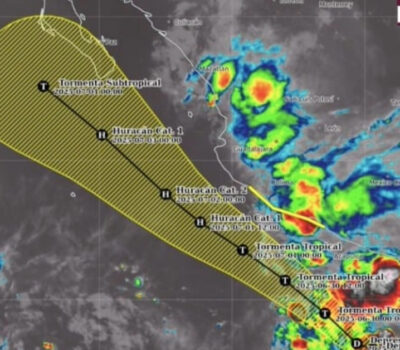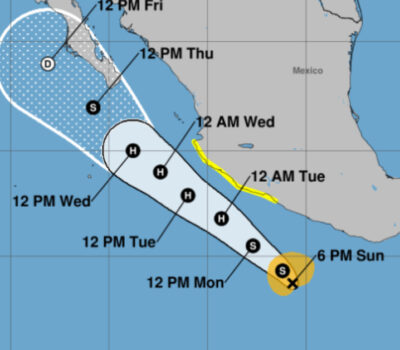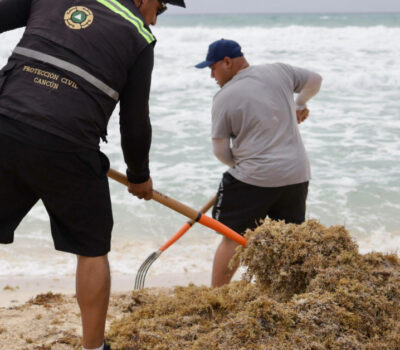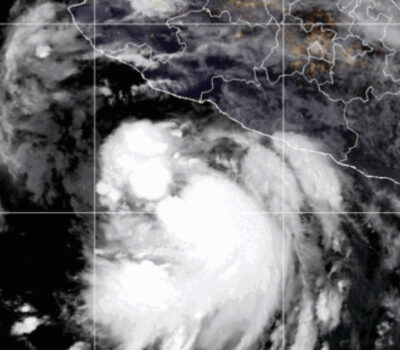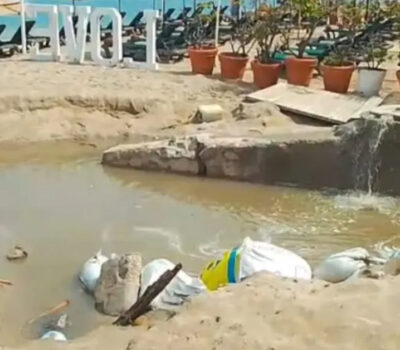Fabiana wakes every morning at 4:30 a.m., like all the women in her community. She grinds the corn she boiled the night before until it becomes soft dough, from which she forms a few balls that once flattened and cooked on a griddle become tortillas. Fabiana, who is ethnically Tzotzil Maya, is 23 years old, with a husband and two children, and also a member of the support base for the Zapatista Army of National Liberation (EZLN).
She works at home almost all day, every day, while toting her youngest child. Her husband helps with some chores traditionally considered “women’s work,” like shelling corn or plucking poultry, and sometimes he takes care of the children while she cooks.
“I was born in the town of San Juan Chamula, in the Chiapas highlands. When I was 10 years old my family became Zapatista and the Council for Good Government gave us a parcel of land in this community,” Fabiana told Latinamerica Press. “I met my husband here. We are very happy with our children and we decided we don’t want more.”
Triple oppression
Family planning is one of the rights established by the Women´s Revolutionary Law the Zapatistas wrote in 1994. The law, which is in effect in areas under EZLN influence, also provides for women’s right to hold military and political office, to benefit from a dignified wage, education, and health services, to be free from abuse and free to choose their couples.
“Historically the condition of the indigenous population in Chiapas has been one of exclusion, and the women have lived under a triple oppression: [they are] women, poor, and indigenous,” Guadalupe Cárdenas, of the Mercedes Oliveira Feminist Collective (COFEMO) of San Cristóbal de Las Casas, Chiapas, told Latinamerica Press. “Their political participation has always been rendered invisible, but with the Women’s Revolutionary Law this changed; they started going to rallies, taking the microphone and speaking, holding political office. There was a great change in attitude in Chiapas — even outside of the Zapatista movement — and men began to value women, at least in word; it is no longer politically correct to exclude the participation of women.”
In Fabiana’s community also lives Teresa, who is 15 years old and said she is very proud to be a member of the EZLN. In the afternoons, Teresa and her cousin sit across from the town’s communal store and watch the boys go by. They talk about how the girlfriend of one of the guys left him, and now he has another girlfriend who isn’t Zapatista.
That girlfriend, the girls explained, has said she wants to become a Zapatista. Otherwise, the boy would have had to leave the organization. The teens described how in the communities that are part of the resistance, couples choose each other and then meet the respective families, whereas before the EZLN took root, the tradition had been that the man would choose a wife, and then would arrange with her family the payment of a dowry. When asked whether she would want to marry and have children, Teresa laughed, answering that she thinks she does, but for now she’s too young.
A few kilometers away, in the Tzotzil Maya — and not Zapatista — community of San Juan Chamula, girls marry before they become women. On Mar. 12, a 14-year-old girl left her husband after three years of abuse. A judge issued a warrant for her arrest for abandoning her home and fined her 27,400 Mexican pesos (approximately US$2,100). The girl, who had been purchased for 15,000 pesos (about $1,150), claimed she spent 29 hours in the municipal jail with no food or blankets, surrounded by trash and human feces.
The Zapatista law doesn’t allow rulings that are so openly harmful to human dignity, however it’s impossible that just by decree the ingrained practices of a community’s culture and conscience have changed.
Resisting within the resistance
The Zapatistas themselves, in booklets about the participation of women in the autonomous government that were published in Aug. 2013, noted that in the last 20 years, there has been great progress in their communities, yet gender equality still hasn’t been achieved. According to the booklets, which were part of the course “Freedom according to the Zapatistas” that was conducted within the so-called Escuelita Zapatista, or Little Zapatista School — a week-long course in which each participant lived for a week with a host family in a community engaged in resistance —, the difficulty in accepting that female Zapatistas can hold political office comes as much from men as it does from women, because of an upbringing that doesn’t teach women they have rights.
“Once, several militiawomen became pregnant, and the order from the Zapatista leadership was that they have abortions, along with the aid of some non-governmental organizations. If the women wanted to keep the baby they needed to cease being militiawomen and live their lives as housewives, while the men who got them pregnant faced no consequences,” recounted Cárdenas, who worked in the Zapatista area until 2000. “However, I believe the Zapatista women are learning to resist from within the resistance, [where] they are clandestine within the clandestine. They learned the way of resistance to neoliberalism, so they can take up the path of resistance to the patriarchy. In fact, they are already doing so. They disagree with many things in their organization and their culture, and they are changing them. It’s slow but they are taking charge of the changes they need.”
By Orsetta Bellani
Fabiana wakes every morning at 4:30 a.m., like all the women in her community. She grinds the corn she boiled the night before . . .

